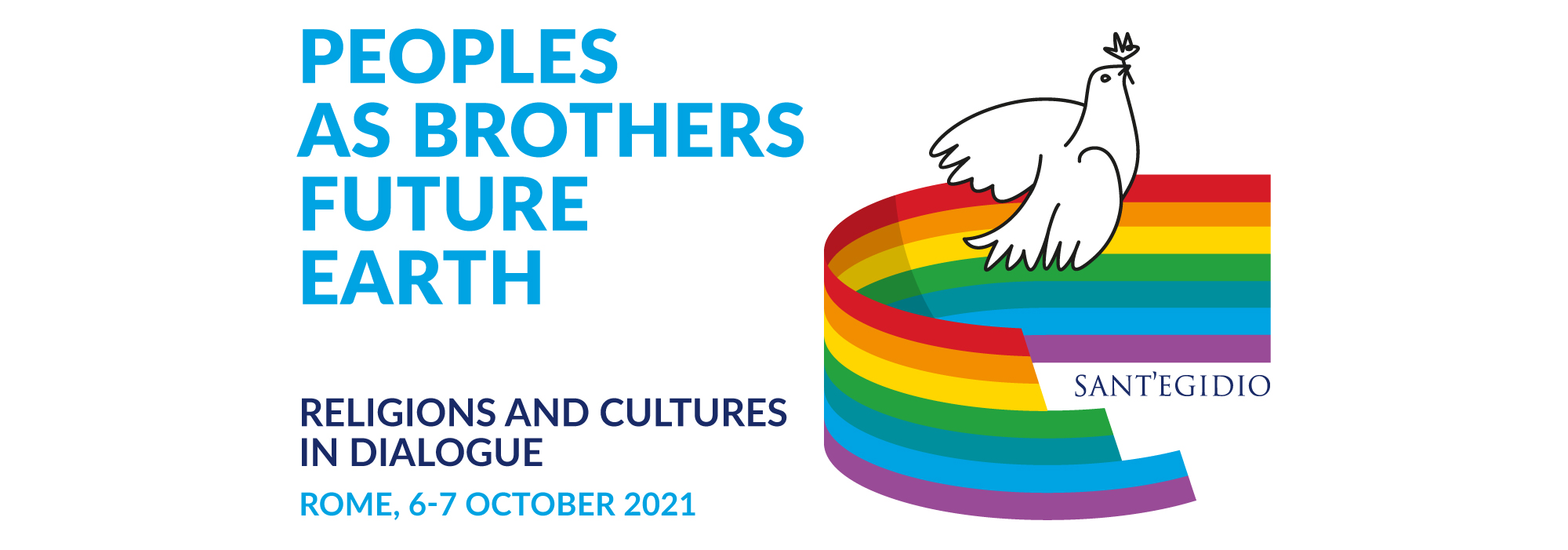
Is peace possible? My faith-filled answer is yes. We, as humanity, have seen real progress in curbing many forms of war and can hope for far more as we look ahead. We live in an era where we have gifts that human societies have never known before: the pragmatic, realistic hope that every child that is born can realize a right to health, education, and opportunities that is truly honored. But… there is so far to go.
Listening to passionate calls for peace in recent weeks, I recognize ambiguities and ambivalence that surround the ways peace is understood in our contemporary lives, by religious, interreligious, and non-religious communities alike. And, as with so many issues, the COVID-19 emergencies shine new light on both perceptions and realities. This morning I explore both how I see changing understandings of what many among us aspire to when we speak of peace, and where responsibilities to move forward may lie.
Contrasting images of war and peace are deeply engrained in human understandings. Children play with toy soldiers, fight battles, and translate instinctive aggressions into imagined but violent contests. History is told as narratives of wars fought, and peace “made”. “Virtues” that are linked to battle shape values and how honor and courage are defined. They distort relationships between men and women in ways both obvious and more subtle. Shakespeare’s King Henry V admonishes his soldiers on the eve of battle:
“In peace there’s nothing so becomes a man as modest stillness:
But when the blast of war blows in our ears,
Then imitate the action of the tiger;
Stiffen the sinews, summon up the blood, disguise fair nature with hard-favour’d rage..
Now set the teeth and stretch the nostril wide.”
Thus many virtues are associated with war and with military culture: bravery, loyalty, discipline to start with. We use metaphors of war all too readily. For example, in speaking of “battling COVID”, we invoke the positive virtues of organization, mobilized effort, and discipline. But we also cast the virus as an enemy to be vanquished. In contrast, the pain, anguish, destruction, and futility that war evokes are also engraved in life narratives and underpin many unhealed tensions that are embedded in conflicts across the world. At a gut level, we recognize that war and the weapons associated with it are evil.
War and military might are, even so, still very much part of modern life. One source estimates that some 174 countries are engaged now in some form of war. The United States military budget in 2019 was $686 billion and global military spending in 2020 was around $2 trillion. Far more important is the bitter pain of conflicts and dashed hopes that rage in far apart places: South Sudan, Myanmar, DRC, Venezuela, and too many other places. Violent conflict is unimaginably brutal and it can escalate in minutes, fires of tensions sparking violence leaping boundaries in, it seems, seconds. The conflicts and polarization in many societies, mine included, are a long way away from a thoughtful understanding of peace. Thus, while progress in reducing conflicts gives hope, there is still a deeply engrained reality of might (expressed in military terms above all) accompanying power, resort to organized violence, and enormous suffering of people.
But when people, young and old, speak of peace in interreligious gatherings they often have very different hopes and ideas in mind than settling violent conflicts. Peace, when you listen to people who believe deeply in it, can mean micro-finance, women’s rights, quality education, health, and an inner stillness and sense of well-being. It can mean opera and meditation, delicious food and a robust educational challenge.
And conflict today rarely takes the form of the ancient model of declaration of war, battle, followed by victory or defeat reflected in a treaty like those signed in Versailles (1919). Tordesillas, Westphalia, or the Congress of Vienna. Definitions of war can be fuzzy, with authority to decide when and what constitutes war remarkably ambiguous. Most conflicts involve multiple actors, formal and informal, many operating independently, messy motives, involvement of civilians, and uneasy boundaries between war and peace. Suffering is wide and deep but that of women and children gives special pain.
Peace today is rarely guaranteed by a document hammered out around a table of some sort, by wise or less wise men (almost exclusively up to now). Peace is, as the Community of Sant’Egidio knows so well, built and rebuilt time and time again, grounded in addressing pain and conflicts, new and old, involving countless groups. Patience and persistence are vital prerequisites for this modern task of building peace.
So what is the modern ideal of peace, and how might it demand a recalibration of images and language? Peace is the absence of war, yes, and, for those in Tigray or CAR today that’s foremost. For many, peace is also security, something deeply felt by people everywhere, even if somewhere a longing for battle and uncertainty (associated perhaps with adventure) still lingers. Military organization and thinking is most certainly not something of the past. Peace has a mundane facet, a mundane thing that, again, the COVID crises have highlighted starkly, that good governance truly matters. That means honest service, “battling” corruption with vim and vigor, and truly giving priority in reality, which means attention and budgets, to the most vulnerable among us.
But what for us, idealistic peacebuilders, is primordial, vital, is the link between peace and fairness, justice, opportunity to thrive, develop, build relationships, and experience joy. That’s why discussions about peace so often take us to human rights and the ideals of a complex society where there is the spice of diversity, dynamism to discover new things, ideas, and rich relationships, with family and well beyond. Today, peace is inextricably linked to human development, to public health, and to care of the planet. And a spiritual peace, we are often reminded, must begin with self awareness, willingness to listen, openness to respect, and love for others. So we must keep asking how we can, as a global community where there is a genuine, authentic commitment to the welfare of each human being and to our environment, move in those directions.
In Bologna, on September 12-14, the topic of peace was central at a remarkable gathering of religious actors, political leaders, and scholars. The G20 Interfaith Forum was part of the Italian Presidency of the G20, and aimed to prepare for the leaders’ summit that will take place at the end of October. How, the implicit question was posed, are religious teachings and communities involved in these modern challenges of peace? Building peace is the goal, but surely first the aspirations involved must be clearly defined. With COVID-19 emergencies dominating world attention and threatening the hard won gains of recent decades, how does the persistent work of religious and interreligious communities for human welfare relate to the global agenda that is defined by global leaders and institutions? How do issues of poor country debt, SDR allocations, vaccination priorities and delivery, and education for all relate to the fundamental, deeply felt hopes expressed centered on the term “peace”? These issues will stay with us, as we look to 2022 and the G20 presidency that will be carried forward by Indonesia.
The reality that the COVID pandemic has exposed so sharply is that issues commonly treated in siloes cannot be today. Partnerships are vital, as always, but in the complex world of today they must take new forms. Complex interconnections between sectors are inextricably interwoven and they matter. The horrific challenges of hunger and starvation are linked to conflicts. Internet regulation is tied to hate speech and incitement to violence. Health and education are linked to each other, as are the challenges of the large and growing refugee and forced migrant population, estimated at over 82 million.
Religious communities are integral parts of societies, including their power structures. Thus the challenges for peace include finding better ways to link, far more boldly and in new and creative ways, the different meanings we give to the hopes for peace. It begins with personal dreams and hopes, spiritual longings for stillness but also for service, national governance, and the fragile multilateral systems that are our shared passion and commitment. As we reflect, in different interfaith settings, it may be helpful first to be more aware and more cautious in using the metaphors and language of war, and second even as we appreciate the richness of meanings encapsulated in the words peace, pace, paix, paz, shalom, that we link the different elements, the senses, in ways that speak across sectors and cultures but also are clear and disciplined in linking the rhetoric and promise to action.
We can and must believe that peace is possible, and that we have teachings and wisdom and technologies that can help us to achieve the modern as well as the ancient hopes for peace in our time.
